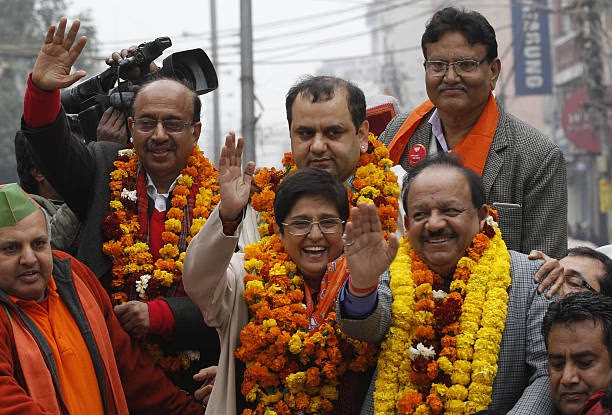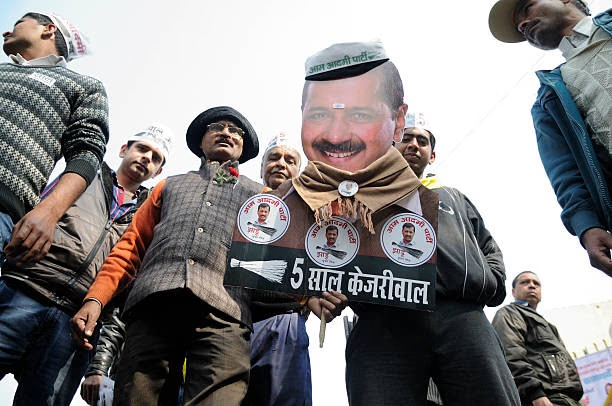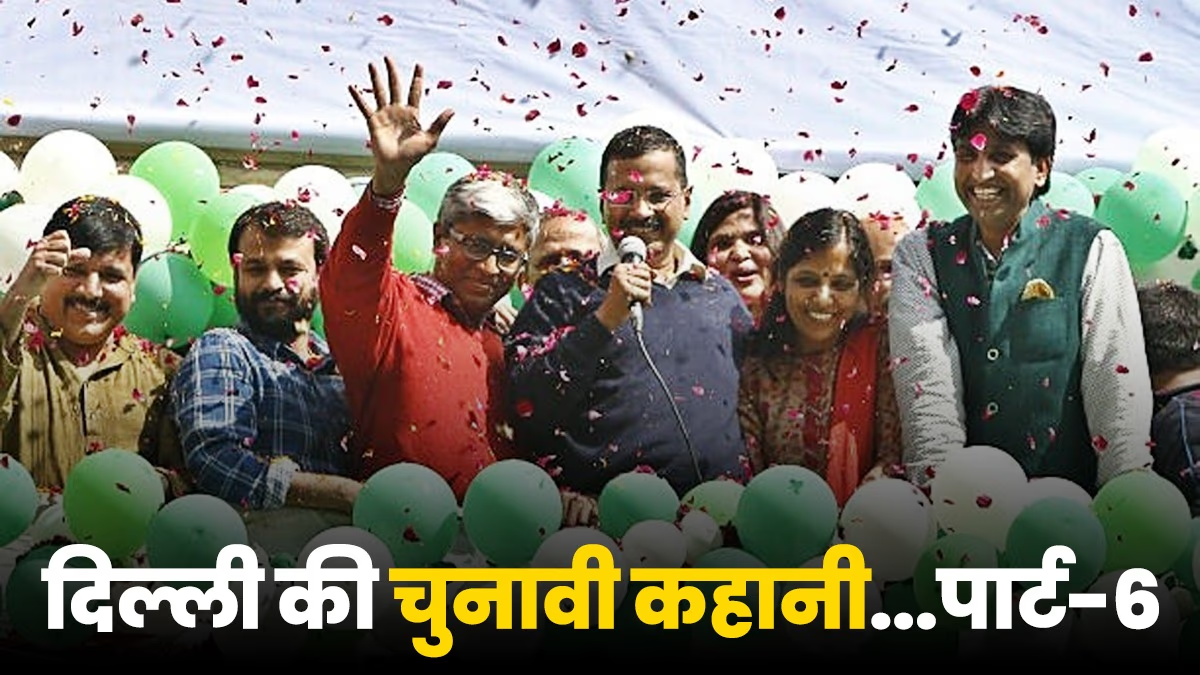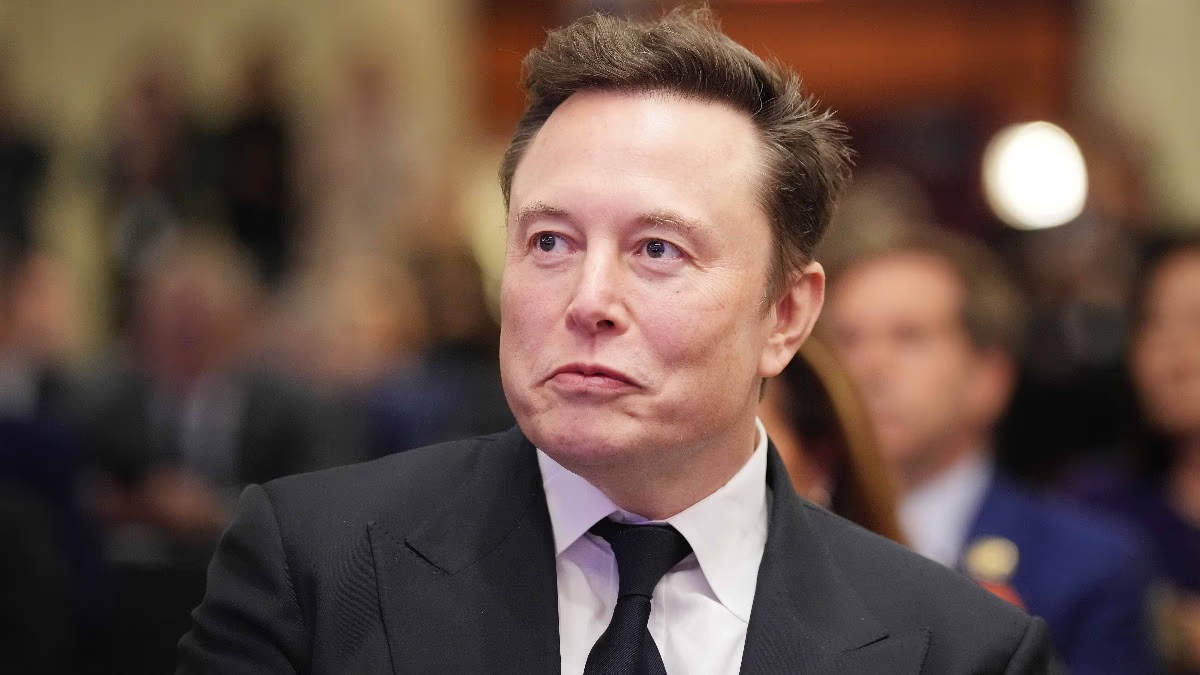The 2015 Delhi Assembly election. It marked the sixth election in the national capital and became historic in many ways. Arvind Kejriwal's Aam Aadmi Party (AAP) clinched an extraordinary and unimaginable victory, winning a record 67 seats. The BJP was reduced to just 3 seats, and others failed to even open their account. These results were deemed historic for numerous reasons, with swing voters cementing Kejriwal's dominance. This election saw AAP's share of votes increase by 24.8%, enabling them to win 28 more seats. This resounding triumph was a significant boost for AAP.
After AAP's impressive debut in 2013, Delhi's electoral battles became a triangular contest. The 2015 Assembly election not only brought significant changes in Delhi's politics but also set new dimensions in the country's overall political landscape. In 2013, AAP had captured 28 seats with a 29.7% vote share. Come 2015, AAP made a giant leap, not only leading by 39 seats but also increasing its vote share by 24.8%, securing 67 seats and a 54.5% vote share. Arvind Kejriwal from AAP, Kiran Bedi from BJP, and Ajay Maken from Congress were the prominent faces.
Congress Dwindles to 9% Vote Share
Congress's performance in the 2015 election was dreadful. They failed to secure even a single seat, and their voter base swiftly shifted to AAP. In 2008, Congress received 40.3%, 24.7% in 2013, but managed only 9.7% in 2015. The BSP, which had garnered 14% in 2008, also collapsed and managed only 1.3% in 2015. AAP reaped significant benefits from this, while the BJP faced the brunt of the losses.
BJP's Stable Performance, Seats Decline
Although statistics show, BJP received its lowest vote share of 32% in 2015. Previously in the 2003, 2008, and 2013 elections, BJP's vote share consistently hovered between 32% to 36%. This indicates no significant changes occurred, but due to swing voters, there was a considerable shift in seats during the 2015 election.

Source: aajtak
In 1993, BJP won 49 seats and achieved a 42.8% vote share in its first election. Successive elections saw fluctuating fortunes: 15 seats and 34% in 1998, 20 seats and 35.2% in 2003, 23 seats and 36.3% in 2008, 31 seats and 33.3% in 2013, and only 3 seats and 32.3% in 2015.
A Broad Field of Contenders
In total, 72 parties fielded 673 candidates. In 2015, there were 13,309,078 registered voters, with 8,980,294 casting their vote. A record 67.5% voter turnout was recorded, compared to 65.6% in 2013.
How Did AAP Win?
In 2013, Kejriwal became Delhi’s Chief Minister with Congress's backing, but his government fell after just 49 days. During this brief period, the Kejriwal government took three major decisions that laid the groundwork for AAP's resounding victory. AAP emphasized issues of electricity and water, and once in power, immediately halved electricity rates by providing subsidies for up to 400 units. They declared 20,000 liters of water free for every household each month and abolished sewer charges altogether. AAP also addressed the rising cost of education in Delhi by sending notices to 200 private schools charging exorbitant fees.
Three Promises Became Gamechangers
AAP focused its electoral strategy on small, impactful issues such as water, electricity, and corruption. The party had a large number of young, dedicated workers who campaigned at the grassroots level. AAP made a promise to cut electricity rates by up to 50%, provide 20,000 liters of free water to every family, launch an anti-corruption helpline, and improve governmental schools and health services. They promised to open Mohalla Clinics, strengthen CCTV surveillance, and enhance women’s helpline—which resonated deeply with half the population. AAP also promised to provide affordable housing for slum dwellers.
Experts believe that major decisions related to electricity and education elevated Kejriwal’s image among the public, leading to a game-changing outcome. From February 2014 to February 2015, Delhi was under President's Rule. However, when Assembly elections occurred a year later, AAP made history by winning 67 out of 70 seats, largely due to their promises of free electricity and water which became quite iconic, leading to other parties adopting similar promises in their states.

Source: aajtak
In Delhi’s Assembly elections, this was the biggest victory yet for any party. AAP dealt a severe blow to Congress, further eroding its vote bank. Congress's current loss amplified the damage that had begun in 2013, as AAP captured Congress’s voter base. Congress leader Ajay Maken accepted responsibility for his party's electoral defeat and resigned from his position as General Secretary. After 15 years in power, Congress’s image had become associated with corruption and sluggish governance.




